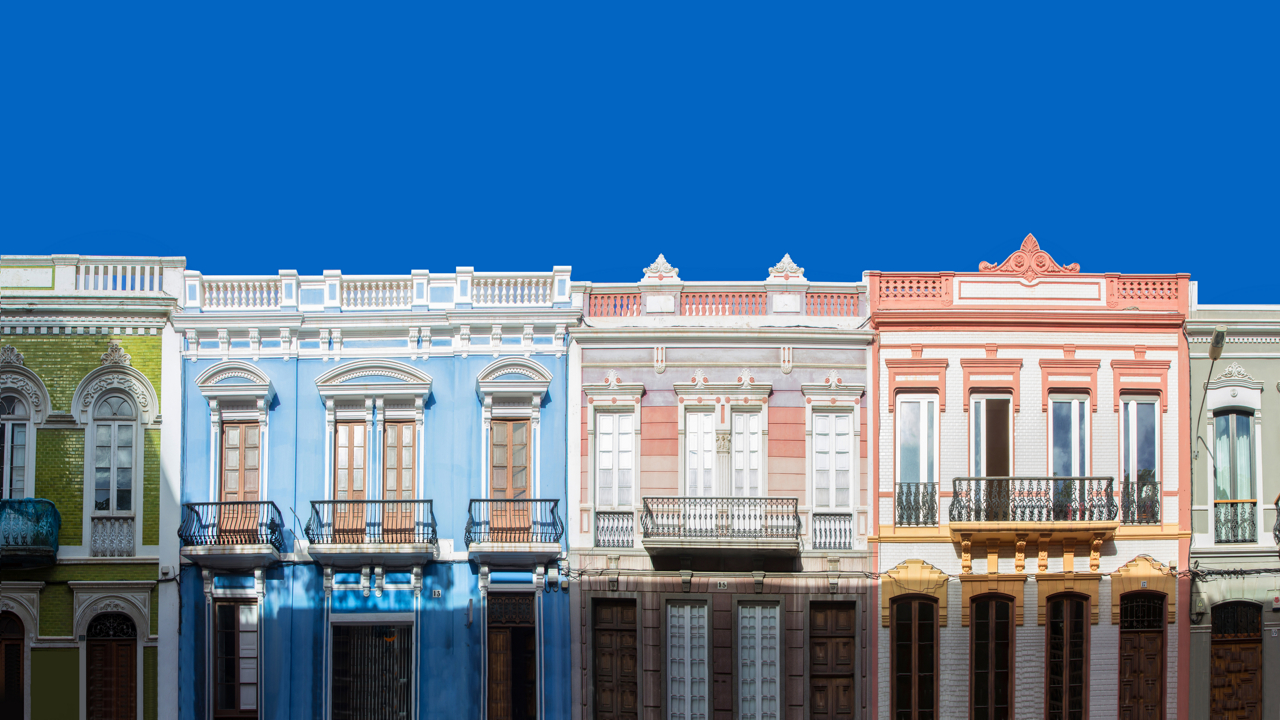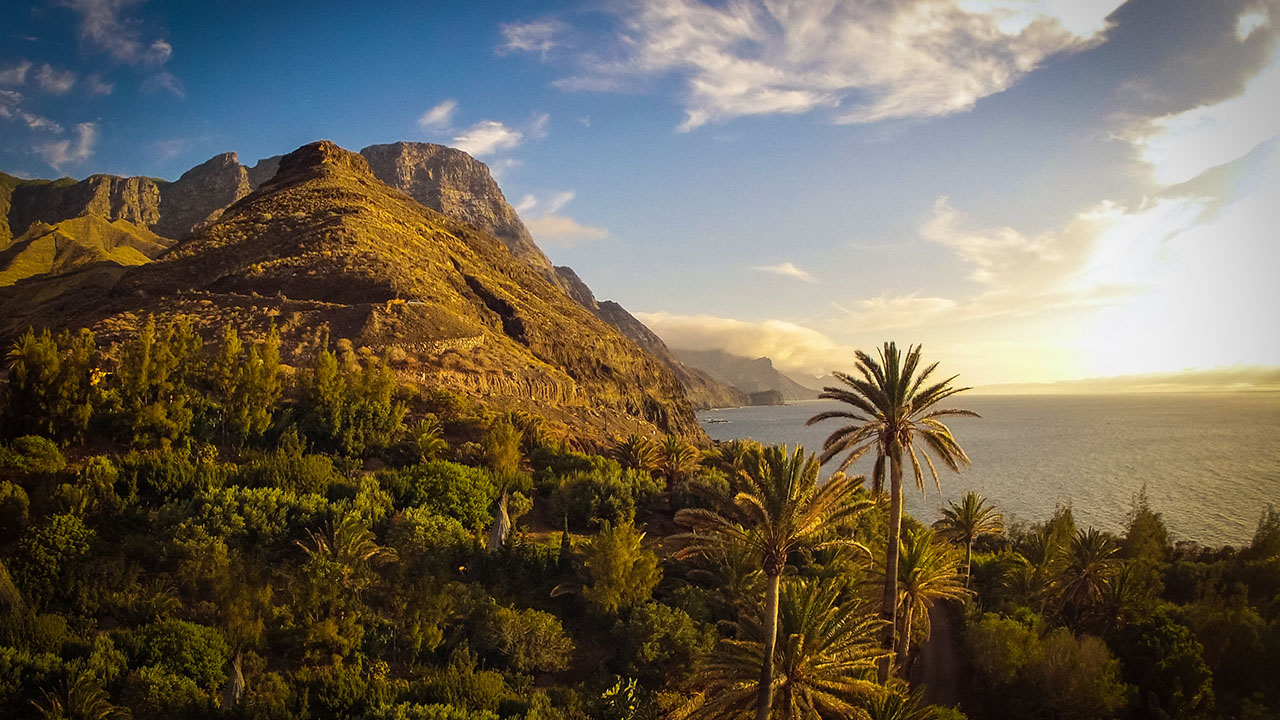Calle Perojo, the street in Gran Canaria that runs on forever
Calle Perojo, with its Site of Cultural Interest award, features a range of colourful, architectural styles and a passion for detail in Las Palmas de Gran Canaria.
Architecture, colour and a passion for detail are the attractions along Calle Perojo in Las Palmas de Gran Canaria, a street that has been awarded the title of Site of Cultural Interest (BIC in Spanish) in the category of Historical Location, in recognition of its great beauty and artistic value. A walk around this emblematic street in the island’s capital is to delve into an elegant environment in which past and present go hand in hand to provide a memorable urban experience.

The orchard that surrounded the city give way to Calle Perojo, in the form of a succession of stately buildings and houses that lined a long avenue, the building work for which started around the turn of the 20th century. The decision had been taken by the council to extend the city beyond the confines of the wall which had enclosed it on the northern side up until midway through the 19th century, and the emergence of a new local bourgeoisie shone through on these fancy new façades that sprang up, representing a fascinating snapshot of this vibrant historic and social period Las Palmas de Gran Canaria experienced.
The only boundaries the promotors and architects seemed to be limited by was their own imagination. The exteriors of these buildings are like an archaeological and design feast, in which all imaginable shapes and styles come together in a blend of romanticism, modernism and rationalism, in a display of anything-goes in their search of beauty. Put all of these styles together and you get a street like Calle Perojo.

This superb collection of balconies, windows, ballustrades, gorgeous carpentry designs, whimsical cast iron shapes and ornamental pilasters have lived through to the present day, a scenario for an urban maze which features a bit of everything, packed with shops and restaurants finished off in a tasteful manner, in keeping with Calle Perojo’s original style. Bars abound from corner to corner offering visitors the perfect cup of coffee together with typical cold meat dishes; fine antique and decoration shops; Paris-style hair-dressers; hot chocolate bars and even an inn.

In its prime, Calle Perojo became a veritable architectural laboratory and a leading light in the latest construction methods, boasting a pioneering and experimental character which seem to have provided the inspiration for modern-day areas of co-working and innovative enterprises that are also dotted around the area. Yet, as a contrast (which really sums up Las Palmas de Gran Canaria in a nutshell), there is always room for the cozy little corner bar to grab a roast pork roll, a plate of chickpeas and a watercress stew. Calle Perojo has a beginning and an end to it, but it runs on forever.

Calle Perojo is also a superb location for starting out or finishing up a day’s shopping around Triana. It opens out onto Calle Bravo Murillo, the site of the Cabildo de Gran Canaria building, one of Spain’s finest exponents of rationalist architecture, designed by Miguel Martín Fernández de la Torre. The street passes through the exact spot where the old northern wall that closed off the old and very noble town centre of Vegueta-Triana used to stand. Opening out right at the other end of Calle Perojo is the subtle Plazoleta del Padre Hilario, where palm trees and other trees provide this spot with a tiny oasis which in turn branches out into other side streets just perfect for urban exploration.

So we have gone into great detail about Calle Perojo, but we haven’t explained the person who gave it its name. The mystery can now be revealed. José Perojo y Figueroa was the island representative at the Spanish Houses of Parliament between 1905 and 1907. He was well known for the way he staunchly defended the islanders’ interests, and his sudden death caused a quite remarkable impact on society at the time. On the first anniversary of his passing, the city decided to call one of its streets after him, truly one of the most beautifully striking streets in the whole city, so much so that it would in time become a Site of Cultural Interest.




Comments are disabled for this post.